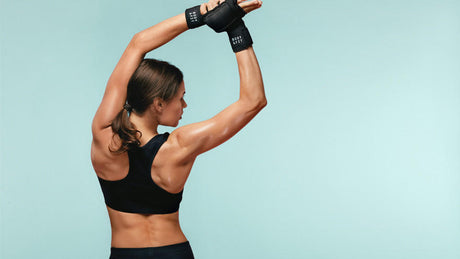Those who prick up their ears regularly hear fellow athletes in the gym claim that they explicitly train the inside chest. Would that really be possible?
The chest muscles: m. Pectoralis major and m. Pectoralis minor
The chest muscles can be roughly divided into the pectoralis major muscle and the pectoralis minor muscle. The latter lies under the m. Pectoralis major. You train the large chest muscle mainly through chest exercises where your body is in a straight line, such as standing upright or lying horizontally on a bench. Examples are the 'standard' barbell chest press and the dumbbell fly. The small pectoral muscle, also called 'upper chest', is mainly trained by incline chest exercises such as incline barbell chest press and the incline dumbbell fly. With these exercises you have the back of the bench slightly raised, so that you partly take the load off the large pectoral muscle and transfer it to the small pectoral muscle.
Physiological approach
Physiologically it is impossible to train the 'inside' of the chest muscles. Unfortunately. The muscle fibers of the pectoral muscles run over the width of the body, i.e. horizontally. As a result, there is no subdivision between the 'inside' and 'outside' of the chest and you cannot train them separately from each other. After all, if you stretch an elastic with both hands, there is the same amount of load on each part. There is, however, a subdivision into the bottom and top of the muscle. This allows you to emphasize the (individual) upper and lower muscle fibers of the small and large chest muscles. With decline exercises, for example, the opposite of incline exercises, you lie somewhat backwards. This allows you to address the lower muscle fibers, or the bottom of your large chest muscle, more.
"But I can really feel the inside of my chest, can't I?"
That can be absolutely right. One reason for this is that the part of the muscle fibers on the inside of the chest are pushed inward. You can say that there is an accumulation in that part, which gives you the feeling that there is more tension on that part of the muscle fibers. You push all the muscle fibers together. Especially chest adduction exercises cause this feeling. These are exercises with which you move the arms from the outside to the inside. A good example of this is the fly.
Help, now what?
You get a well-developed and full chest by creating microtrauma. These are small tears in the muscle fiber and are the reason for 'muscle pain'. When these recover, your muscle mass will increase. To maintain optimal muscle stimulation, it is advisable to vary exercises (compound and isolation exercises) and volume. Tip: always focus on the eccentric contraction, this is the movement in which the muscle extends. Unfortunately, this part of the movement is often neglected, while the eccentric contraction is the main cause of micro trauma. An example of an eccentric contraction is lowering the bar during a chest press.



